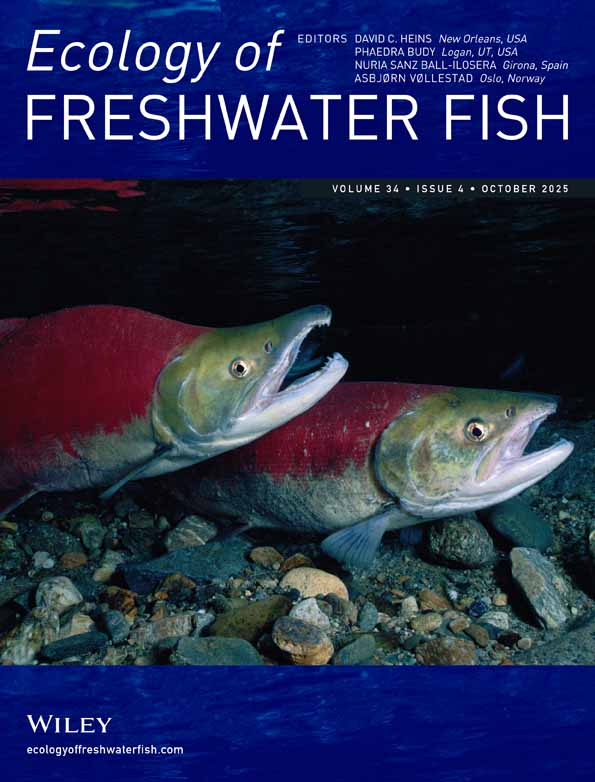Relationship between stream temperature, thermal refugia and rainbow trout Oncorhynchus mykiss abundance in arid-land streams in the northwestern United States
Un resumen en español se incluye detrás del texto principal de este artículo.
Abstract
Abstract – Warm stream temperatures may effectively limit the distribution and abundance of Pacific salmon Oncorhynchus spp. in streams. The role of cold thermal refugia created by upwelling groundwater in mediating this effect has been hypothesized but not quantitatively described. Between June 21 and September 15, 1994, rainbow trout O. mykiss abundance within 12 northeast Oregon (USA) stream reaches was inversely correlated with mean ambient maximum stream temperatures (r=−0.7, P<0.05). Some rainbow trout used thermal refugia (1–10 m2 surface area) that were on average 3–8°C colder than ambient stream temperatures. Within the warmest reaches, high ambient stream temperatures (>22°C) persisted from mid-June through August, and on average 10–40% of rainbow trout were observed within thermal refugia during periods of midday maximum stream temperatures. Frequency of cold-water patches within reaches was not significantly associated with rainbow trout density after accounting for the influence of ambient stream temperature (P=0.06; extra sum of squares F-test). Given prolonged high ambient stream temperatures in some reaches, the thermal refugia available in the streams we examined may be too small and too infrequent to sustain high densities of rainbow trout. However, these refugia could allow some rainbow trout to persist, although at low densities, in warm stream reaches.




